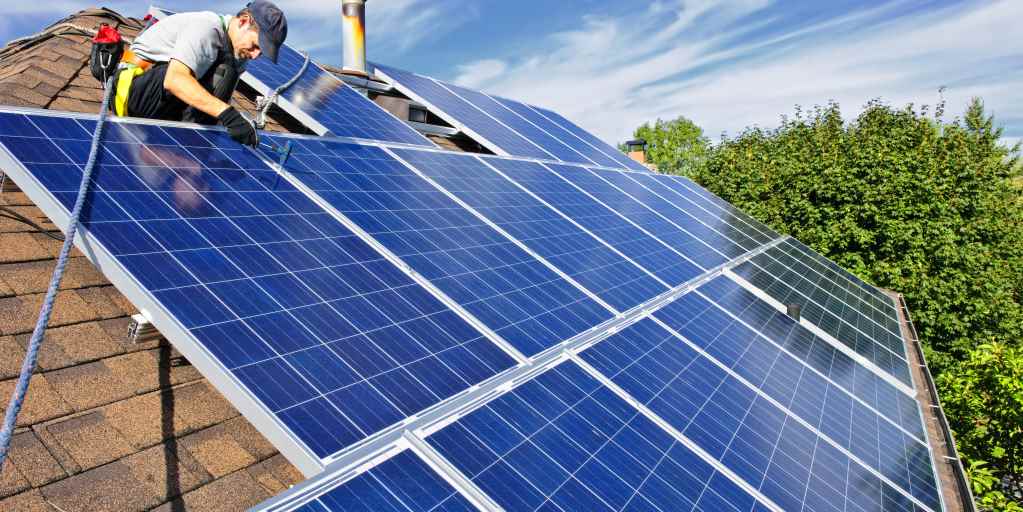Energy efficient (re)construction

European directives require residences to become ever more energy
efficient. To realize this, several measures are implemented, which
should bring the primary energy consumption for heating and – sometimes
– for cooling close to zero. However, the savings calculated in theory
are not always realized in practice. The following two effects explain
the divergence. First in line figure dweller habits, which are typically
more thrifty than assumed in official regulation but turn less
beneficial when, through optimized building physics and changing human
behaviour, residential buildings become ever more energy efficient.
Second in line comes excess voltage in the low-voltage distribution
grid, which was not designed to transport simultaneous peaks in
electricity produced on sunny summer days by a growing number of PV
installations. As a consequence, part of these PV installations must
sometimes be temporarily disconnected from the grid, which reduces the
share of renewable
primary energy and, obviously, the savings
potential on conventional primary energy use. With these adjusted
insights in mind, the KVAB states following positions:
- On average, dweller habits lead to a lower annual end energy use for heating than the calculation tool imposed by the Energy Performance of Residences (EPW) in Flanders predicts. However, due to a decrease in supplementary energy savings because of building physics and, sometimes, changes in habits in ever more energy efficient residences, the total extra savings through more stringent legal requirements will be less than expected. Moreover, a massive move to PV as renewable primary energy source would further impair the savings. Indeed, in sunny summer periods PV-installations would have to be disconnected from too weak low-voltage distribution grids in order to avoid excess voltage input. As a consequence, the energy yield from PV would be lower than expected.
- For residential buildings, annual primary energy used for lighting and appliances is not covered by the energy performance legislation. However, its share in the total residential primary consumption is already truly important. Its relative share will further increase since primary energy consumption for heating and domestic hot water is due to go down because of mandatory savings measures. That drop may incline dwellers to care less about use of lighting and appliances. A scenario according to which an ever more strict energy legislation will increase the costs of building and retrofitting residences without however reducing proportionally the total primary energy consumption of buildings can therefore not be excluded.
- For residents the extra investments compared to the annual benefits of a lower end energy use are still of overriding importance. The following micro-economic reality must anyhow be guiding: the total present value over the usage period of a residence by the same dwellers must remain close to the lowest possible. Legislation that goes beyond this is not optimal.
- Stepping to net zero (nZEB) or plus energy (n+EB) residential buildings doesn’t look opportune in Flanders, especially not when this would require a widespread installation of PV. Excess voltage problems during summer in most of the low-voltage distribution grids would be unavoidable, as a consequence of which part of the PV installations would have to be disconnected, thus leading to a loss of their share of primary energy supply. In reality there will be no nZEBs, let alone n+EBs and it will prove impossible to amortize PV investments in a reasonable period of time. A possible solution consists of equipping each PV-installation with adapted battery storage and a smart converter. However, this would make PV even more expensive. Alternatively the distribution companies could upgrade the existing grids: yet, this would require huge capital expenditures, the amortization of which would likely be charged to PV owners, thus also increasing private PV investment costs.
- In order to tune electricity use and its production by PV, consumer demand will have to be actuated. In other words, families should change their habits and practices. If smartly rolled out, this could be meaningful for a number of appliances, such as washing machines, tumble dryers, sometimes dish washers, freezers and perhaps refrigerators. But for lighting and other appliances actuating is impossible. Experience also learns that changing habits and practices is a very difficult objective to realize.
- Taking into account the above considerations, the working group thinks it is quite doubtful if nZEB and n+EB residential buildings are meaningful concepts in Flanders. Because of the climate, residential buildings will always consume more primary energy for heating, domestic hot water, lighting and appliances then roof-coupled PV can produce in winter, while in summer the reverse will often be true. On sunny summer days, so much PV electricity will be injected in the grid that part of the installations will have to be shut off, while the price per kWh could drop to zero or even turn negative.
To conclude: energy reality is more complex than a seemingly logical approach suggests.
Recommendations for the Flemish government
- Most urgent is a new and thorough evaluation of the proposed package of stepwise more demanding requirements for residential buildings as planned with an eye on 2021. Is it truly meaningful to move to a primary energy consumption level E30 and to give municipalities the authority to dictate even more stringent performances, up to a level of primary energy consumption E0?
- PV looks nice but, in case one sticks to a massive implementation of it, the use of smart converters and battery storage will be mandatory. In the short term, the costs for both will surely drop, although such an obligation will anyhow demand additional investments.
- On top of the smart converters and battery storage to be installed by PV owners, the low voltage distribution grids and the transformers will also have to be upgraded where necessary. This will require important investments by the distribution companies.
Available documents
Author
-
Hugo Hens
Co-author
-
Jan Kretzschmar
-
Stan Ulens
-
Dirk Saelens
-
Arnold Janssens


bouwen.jpg)